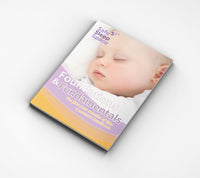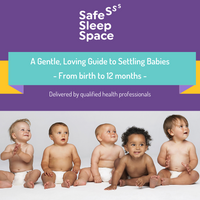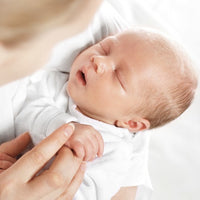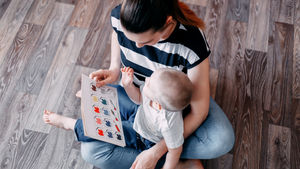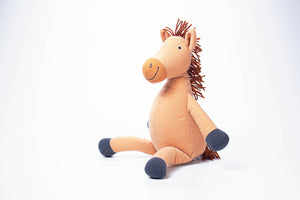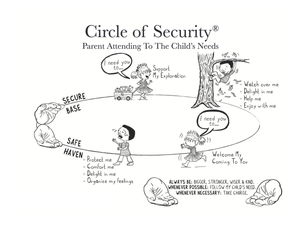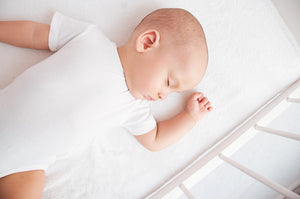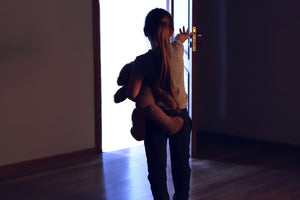Safe sleeping during the day – why checking is important

Most parents are mindful of the importance of following the safe sleeping recommendations for their baby. Following these recommendations helps to reduce the risk of Sudden Unexplained Death in Infancy (SUDI) and to prevent sleeping accidents. Room sharing is also protective and reduces the risk of SUDI by up to 50%.
However, room sharing for day naps is a different matter to overnight when it’s easier for parents to check on their baby because they’re so close. Depending on your individual circumstances, your baby’s bassinet or cot may be in your room or in a nursery. Either way, it’s important you monitor your baby during their day sleeps to make sure they’re safe.
What does safe sleeping mean?
Experts have developed six safe sleeping recommendations which apply to babies aged 0-12 months of age:
- Always place baby to sleep on their back to sleep.
- Keep baby’s face and head uncovered.
- Keep baby smoke free before and after they are born.
- Make sure baby is sleeping in a safe environment both day and night.
- Sleep baby in a safe cot in parent’s room for the first 6-12 months.
- Breastfeed.
*A safe sleeping environment means that the cot, mattress and bedding don’t pose a risk to the baby.
- It’s important that your baby sleeps in a cot which meets the Australian standards for safety.
- The mattress in their cot is firm and flat and is the right size for the cot.
- Safe bedding means that the sheets and blankets are lightweight and firmly tucked in. It’s also important that bedding is only pulled up to the baby’s chest.
- A safe sleeping bag is well fitted across the baby’s neck and chest and has no arms or hood.
How is safe sleeping different at night and during the day?
There really is no difference between safety when it comes to day and night sleeping. Sleeping accidents can happen at any time. It’s important you are consistent with making sure your baby is safe wherever they sleep at every sleep time.
Babies can die from SUDI during the day and at night.
From around 3 months of age, it’s common for babies to sleep for longer periods overnight before waking for feeds. Around 5-6 hours of continuous sleep is normal for babies at night time from around 3-4 months onwards. Patterns of day sleep also change as a baby matures. They tend to develop more predictable patterns of having a morning and afternoon sleep, sleeping for longer periods but less frequently.
No matter what your baby’s daytime sleep routine or sleep cycles may be, it’s important you make sure they are safe and comfortable. Most babies are able to alert their parents they’re awake and need them by crying. But there’s a whole range of verbal ‘cues’ which your baby will use to let you know they’re awake and need you. Fussing, whinging, talking to themselves – you’ll soon learn your baby’s individual language and the best way to respond to them.
What should I be checking when my baby’s sleeping?
Checking on your baby won’t be something which takes a lot of time. But be sure to check on your baby at regular intervals and make sure their chest is moving up and down, their breathing pattern is regular and the colour of their skin is pink.
10 things to check when your baby is sleeping:
- They are still sleeping. Are they moving around and look as if they’re about to wake up? Be mindful that there are benefits in letting babies wake up in their own good time. Often, babies are more active as they transition between sleep cycles and may then settle back to sleep.
- If they are awake, are they happy and content? Some babies like to take their time to wake up and are quite comfortable in ‘their own space’. Follow your baby’s cues for needing your attention.
- Their sleeping position. Remember, it’s important to always place your baby on their back to sleep. Most babies learn to roll from around 3-4 months of age. If your baby can only roll by themselves in one direction, then you should gently roll them back on to their back whenever you see they have rolled onto their front or side. Once they’re rolling both ways, it’s fine to leave them to sleep on their tummy. Most babies need to transition to having one, then both arms out from around three months of age.
- There are no hazards in the room. Blinds and curtains have been known to randomly drop and pose a safety risk to a sleeping baby in a cot.
- The light in the room is still conducive to sleep. You may need to adjust the light coming into the room if this changes during the course of your baby’s sleep.
- Your baby is being disturbed by noise going on in the rest of the household. You may need to close their door if it has been open, or alternately, open it if you want your baby to wake and not sleep for too long. Make sure their room is well ventilated and has good air flow.
- If they seem comfortable and their body and limbs are within the cot rails. You may need to gently reposition them in the middle of the cot if an arm or leg is through the rail.
- If their colour is pink and they are breathing normally. If your baby has a temperature or is hot, their skin will look red and flushed and they may be sweating.
- They don’t appear to be hot or cold. If using air conditioning, an ideal temperature is around 23°.
- If you have pets in the household, make sure they’re not near your baby. Cats are especially good at finding the warmest and most comfortable place to sleep and have been known to climb into babies’ cots! Keep pets away from your baby, especially when they’re sleeping and you’re not constantly supervising them.
How often should I check on my baby during the day?
There is no ideal time interval to check on a baby when they’re sleeping. Most parents work out a pattern of checking which suits them and helps them to feel reassured.
As a general guide, checking every 15-30 minutes is reasonable for very young babies and children. Some parents choose to check their children more frequently than this. As your baby’s routine changes, you’ll need to adapt your usual checking habits. What’s important is that you find a balance in frequency of checking.
If you’re experiencing depression and/or anxiety, this may be reflected in your checking habits.
When your baby is sick or you have a sense that they’re just not themselves, you’re likely to want to check them more frequently. It’s important you always follow your ‘gut feeling’ about when it’s right to see if your baby is okay. You know your baby better than anyone. Even if you have a sense of needing to check them, do it.
You may be tempted to ask your older children to ‘check on the baby’ when you’re busy. Depending on the older siblings age and maturity, this may be a practical option in your household. Though be mindful we all have our own ideas of what it means to ‘check’ on a baby’s safety so don’t assume your older children know what’s required.
Many parents choose to use a monitor to supervise their baby’s sleep, especially if they are physically distant from the baby. Monitors can work very well, though aren’t a substitute for actually checking the baby in person.
For more information check:
- Safe Sleep Space.
- With your Child Health Nurse or GP.
About the Author:
Written for Safe Sleep Space by Jane Barry. Jane has qualifications in general, paediatric, immunisation, midwifery and child health nursing. She holds a Bachelor Degree in Applied Science (Nursing) and has almost 35 years specialist experience in child health nursing. She is a member of a number of professionally affiliated organisations including AHPRA, The Australasian Medical Writer’s Association and Australian College of Children and Young People’s Nurses.
References
Cot safety - safety alert (accc.gov.au)
For Parents - Parental Sleep Assistance – Safe Sleep Space
Safe sleep and rest practices | ACECQA
